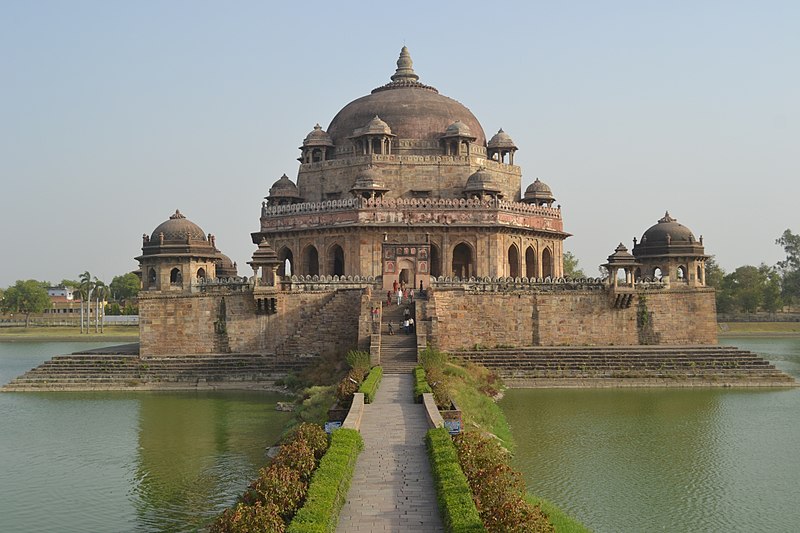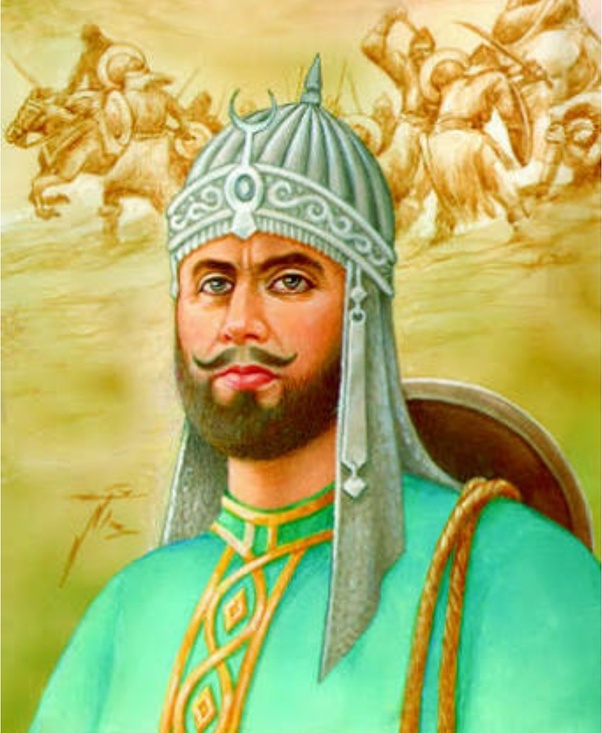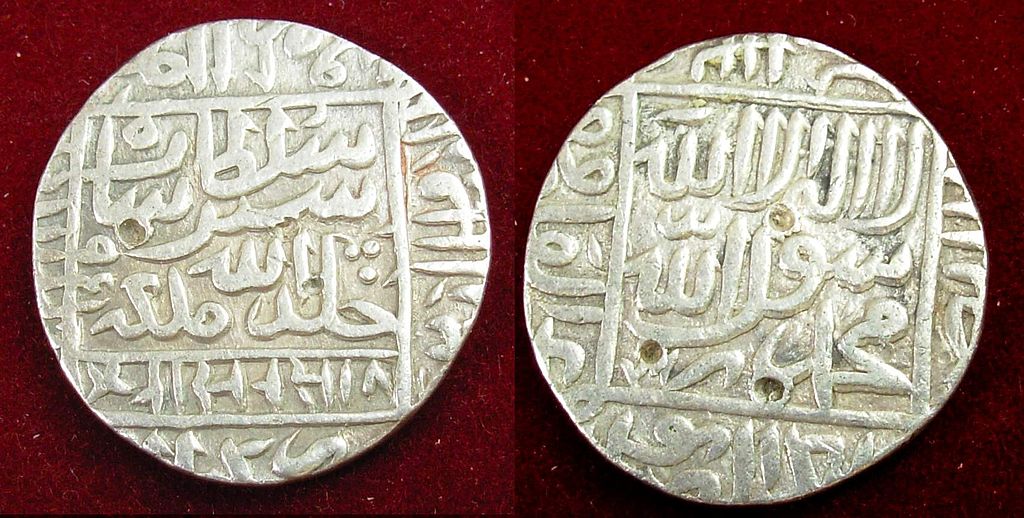Sher Shah Suri, also known as Farid Khan, founded the Suri Empire in India, whose capital was Sasaram, modern-day Bihar. He was responsible for the introduction of the rupee as a currency. Sher Shah, a king of Afghan descent, seized control of the Mughal Empire in 1540. After his untimely demise in 1545, his son Islam Shah replaced him.
Sher Shah, a commander in Babur’s Army
He began his military career as a private before rising through the ranks to become a commander in Babur’s Mughal army and then the governor of Bihar. Sher Shah conquered Bengal and established the Suri dynasty in 1537, while Babur’s son Humayun was away on an expedition. Sher Shah was a brilliant strategist who also proved to be a capable administrator and general. His reorganization of the empire laid the groundwork for later Mughal emperors, particularly Akbar, Humayun’s son.
Sher Shah Suri’s early life and family background
His grandfather Ibrahim Khan Sur began his career as a horse trader before becoming a landlord (Jagirdar) in the Narnaul area (modern-day Haryana) on behalf of his patron Jamal Khan Lodi Sarangkhani, who assigned him a few villages in Hissar. After the conquest of Jaunpur (modern-day Uttar Pradesh), Sikandar Lodi appointed Sarangkhani, a supporter of Sikandar’s claim to the throne, as governor. With a rank of 20,000 sawars, Jamal’s son and successor Khan-i-Azam Ahmad Khan Sarangkhani also appointed Ibrahim Sur’s son Hasan, an Afghan freebooter leader, to the iqta of Sasaram and Khawaspur-Thanda with a rank of 500 sawars. In Narnaul, the Mazar of Suri’s grandfather Ibrahim Khan Sur still stands as a monument.
Hassan Khan had eight sons, and he was one of them. Farid moved to Jaunpur to study poetry, literature, and history. Farid Khan and his father, a jagirdar of Sasaram in Bihar with multiple wives, had a falling out for a while, so he decided to flee. When his father found out, he ran away to serve Governor Jamal Khan of Jaunpur, Uttar Pradesh.
His surname, ‘Suri,’ was derived from the Sur tribe of Pashtuns. He was a distant cousin of Mir Shah Jamal, Babur’s brother-in-law, who remained loyal to Humayun. He was given the name Sher (which means lion or tiger in the older Persian pronunciation) for his bravery when, as a young man, he killed a tiger that leaped unexpectedly upon the king of Bihar.
Conquest of Bengal and Bihar
Farid Khan began his service under Bahar Khan Lohani, the Mughal governor of Bihar. Sher Khan title was given to him by Bahar Khan in honor of his valor (Lion Lord). After Bahar Khan’s death, Sher Khan became the regent ruler of the minor Sultan Jalal Khan. Jalal requested the assistance of Ghiyasuddin Mahmud Shah, the independent Sultan of Bengal when he learned of Sher Shah’s expanding strength in Bihar.
General Ibrahim Khan was in charge of the troops that Ghiyasuddin despatched. In 1534, Sher Khan destroyed the troops at the Battle of Surajgarh after forming an alliance with Ujjainiya Rajputs led by Gajpati Ujjainia and other local chiefdoms. Consequently, he seized total control over Bihar.
Invading Bengal in 1537 and defeating Mahmud Shah was Sher Khan. Due to the surprise invasion of Emperor Humayun, he was unable to seize the kingdom. Sher Khan defeated Humayun in the Battle of Chausa, which took place on June 26, 1539. In May 1540, he again defeated Humayun at Kannauj, assuming the title Fard al-Din Sher Shah and expelling him from India.
Conquest of Malwa
Qadir Shah succeeded Bahadur Shah of Gujarat as king of the Malwa Sultanate upon his death in 1537. During the Khilji regime, he turned to the Rajput and Muslim nobles of Malwa. Sons of Raja Silhadi, Puran Mal and Bhupat Rai, agreed to serve under Malwa’s government due to their interest in the Raisen region. After Bhupat Rai’s death in 1540, Puran Mal became the dominating force in eastern Malwa, which he ruled until 1540. In 1542, Sher Shah vanquished Malwa without a battle, and Qadir Shah escaped to Gujarat.
He then appoints Shuja’at Khan as the governor of Malwa, who restructures the administration and relocates the government to Sarangpur. Sher Shah then requested the delivery of Puran Mal to him. Puran Mal accepted his lordship and entrusted Sher Shah with the protection of his brother Chaturbhuj. In exchange, Sher Shah swore to safeguard Puran Mal and his territory.
The Muslim ladies of Chanderi, which Sher Shah had conquered, accused Puran Mal of murdering their husbands and enslaving their daughters. They vowed to denounce Sher Shah on the Day of Resurrection if he failed to avenge them. After he reminded them of his pledge to safeguard Puran Mal, they recommended he see his ulema.
According to the ulema who issued a fatwa, Puran Mal deserves to be executed. Sher Shah’s men later encircled Puran Mal’s camp. Puran Mal murdered his wife and ordered the other Rajputs to do the same upon seeing this. According to Nizamuddin Ahmad, 4,000 notable Rajputs were present.
In one fighting scene, historian Abbas Sarwani writes, “While the Hindus were executing their wives and children, Afghans on all sides began slaying the Hindus.” Only a handful of women and children were able to flee. Puran Mal and his colleagues exhibited neither heroism nor chivalry, yet they were all slaughtered in an instant. The daughter of Puran Mal was sold to minstrels for use as a dancer, and his three nephews were castrated. Sher Shah said his treason was in vengeance for the slavery of Muslim women, and that he had vowed to exterminate the Rajputs of Raisen when gravely ill.
Conquest of Marwar
In 1543, Sher Shah Suri led an army of 80,000 cavalries against the Rajput king of Marwar, Maldeo Rathore. Maldeo Rathore advanced against Sher Shah’s army with a cavalry force of 50,000 soldiers. Instead of going to the enemy’s capital, Sher Shah halted near the village of Sammel in the pargana of Jaitaran, ninety kilometers east of Jodhpur. After a month of fighting, Sher Shah’s position became critical due to a lack of food supplies for his vast force.
Sher Shah utilized a cunning strategy to escape this circumstance. One evening, he planted fake letters near Maldeo’s camp in a manner that ensured they would be intercepted. These letters erroneously claimed that some of Maldeo’s army commanders had promised help to Sher Shah. This disturbed Maldeo, who erroneously suspected his leaders of betrayal. Maldeo departed for Jodhpur with his own troops, abandoning his commanders to their destiny.
After that, Maldeo’s valiant generals Jaita and Kumpa engaged an enemy force of 80,000 troops and cannons with a few thousand warriors. Sher Shah won the ensuing Battle of Sammel (also known as the Battle of Giri Sumel), but his generals and army suffered significant losses. Sher Shah is rumored to have stated, “I nearly lost the entire kingdom of Hindustan for a few grains of bajra (the primary crop of the arid region of Marwar)”
According to the Mughal historian Badauni, Sher Shah’s deployment of elephant troops helped him beat the Rajput army. Khawas Khan Marwat, a general of Sher Shah, captured Jodhpur in 1544 and occupied the Marwar area from Ajmer to Mount Abu as a result of this battle.
Administration and government
Sher Shah created the trimetallic system that came to be associated with Mughal money. During his reign, the term rupee came to refer to a silver currency with a standard weight of 178 grains, the progenitor of the contemporary rupee. The rupee is the official currency of India, Indonesia, Maldives, Mauritius, Nepal, Pakistan, Seychelles, and Sri Lanka, among other nations. His administration also issued gold coins weighing 169 grains, the Mohur, and copper coins, the Paisa.
Sher Khan, according to numismatists Goron and Goenka, took the royal title of Farid al-Din Sher Shah and had coins made in his own name prior to the battle of Chausa, as demonstrated by coins dated AH 945. (1538 AD).
Sher Shah was responsible for restoring and renovating the Grand Trunk Road, which connects Bangladesh and Afghanistan in the present day. The road was flanked by caravanserais (inns) and mosques, and trees were planted on both sides to provide travelers with shade. Additionally, wells were dug, particularly in the western region. He also constructed a well-functioning postal system, with relays on horseback delivering mail.
Key Infrastructure work
Several of his strategies and achievements were revered by the Mughal kings, especially Akbar. Suri enlarged Humayun’s Dina-panah metropolis and called it Shergarh. He also renamed Patna the old city of Pataliputra, which had been in decline since the seventh century CE.
He extended the Grand Trunk Road from Chittagong in northeast India’s Bengal province to Kabul in Afghanistan’s far northwest. His inventions and reforms were so influential that his archrival Humayun called him “Ustad-I-Badshahan,” or “teacher of kings.” During his seven-year rule, he never lost combat.
Sher Shah constructed a number of monuments, such as the Rohtas Fort (now a UNESCO World Heritage Site in Pakistan), many structures in the Rohtasgarh Fort in Bihar, the Sher Shah Suri Masjid in Patna, the Qila-i-Kuhna mosque inside the Purana Qila complex in Delhi, and the Sher Mandal, an octagonal building also inside the Purana Qila complex in Delhi In 1545, he constructed the city of Bhera in modern-day Pakistan, which contained a mosque bearing his name.
It is generally believed that Sher Shah is tolerant of Hindus, with the exception of the carnage that followed Raisen’s capitulation. Written in 1580 by Abbas Khan Sarwani, a waqia-navis under the later Mughal Emperor Akbar, Tarikh-i-Sher Shahi (History of Sher Shah) details Sher Shah’s governance in great detail.
Death & Succession of Suri’s Dynasty

Sher Shah initiated the siege of Kalinjar in 1543 and died on May 22, 1545, while the fort was under siege. Sher Shah ordered the fort’s walls to be blown up with gunpowder when all previous strategies failed to subjugate the fort, but he was severely injured by a mine explosion when the fort’s Rajput garrison attacked his camp at night. His son Jalal Khan took over the siege and murdered the whole Rajput garrison of the Kalinjar fort, giving him the name Islam Shah Suri. In Sasaram, a village on the Grand Trunk Road, his tomb, the 122-foot-tall Sher Shah Suri Tomb, lies in the center of an artificial lake.


